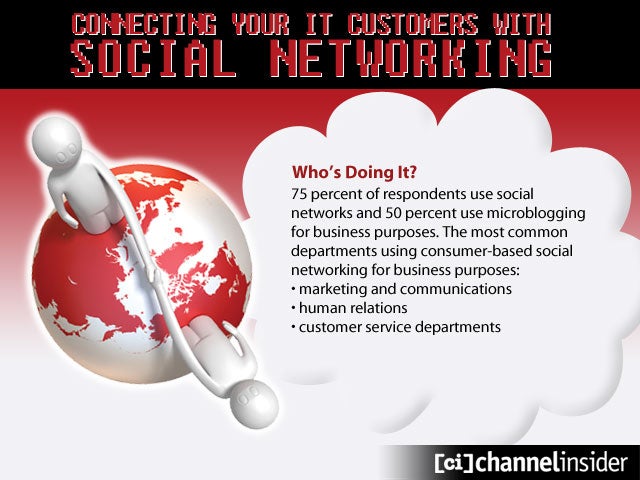 Connecting IT Customers with Social Networking
Connecting IT Customers with Social Networking
Who’s Doing It?75 percent of respondents use social networks and 50 percent use microblogging for business purposes. The most common departments using consumer-based social networking for business purposes:• marketing and communications • human relations• customer service departments
 No Title
No Title
SMBs Dive InSmall and medium-sized businesses are also taking advantage of social networking channels to generate sales leads–larger companies not so much.
 No Title
No Title
Strategic Wild WestSocial networking governance is tangled in more stakeholders than typical corporate initiatives because most organizations haven’t defined who owns external social media strategies."Ignoring the increased usage and influence of social networking and Web 2.0 tools leaves organizations at the risk of misuse, potentially leading to the disclosure of information and misrepresentation of the company." — Evgeny Kaganer, Ph.D., lead researcher and assistant professor, IESE Business School
 No Title
No Title
What Process?Six of seven companies said they have no formal process for adopting consumer-based social networking technology.Only one in five participants has put any policies in place for the use of social networking technology within their organizations.
 No Title
No Title
IT Not InvolvedOne in 10 respondents reported direct IT involvement in externally facing social networking initiatives.
 No Title
No Title
Top Social Media Management Issues• Deciding when, how and what initiatives are to be launched or scrapped• Deciding how the technologies should be managed• Deciding how employee use should be managed"Successful companies in the 2.0 world are those that are tying tools together, managing scalability issues, anticipating the continued evolution of platforms, and using the preferred tools of their stakeholders. These companies build social networking initiatives into their wider strategy and are able to create meaningful connections with their communities."– Neil Hair, Ph.D., lead researcher and assistant professor of marketing, E. Philip Saunders College of Business, Rochester Institute of Technology

